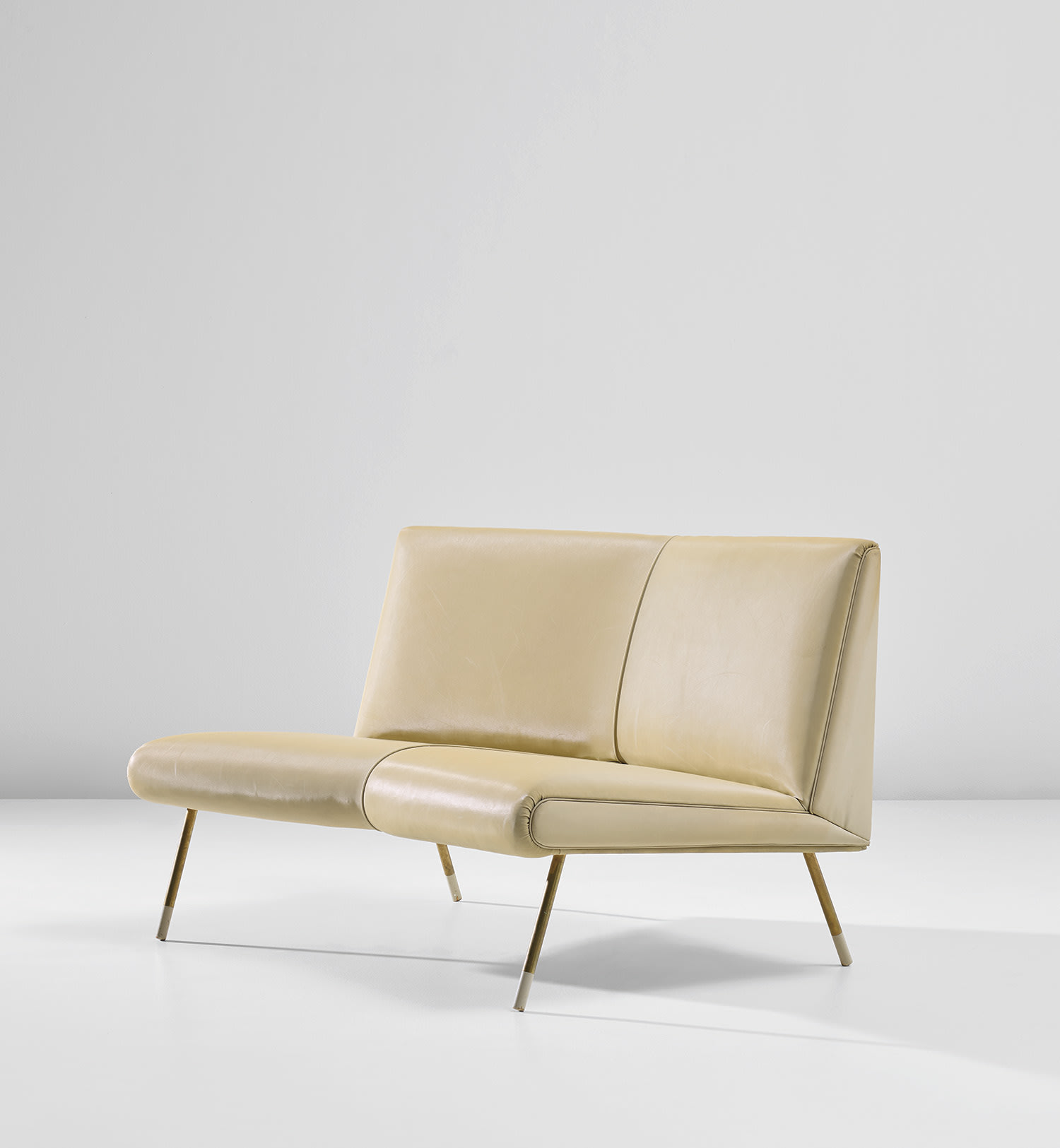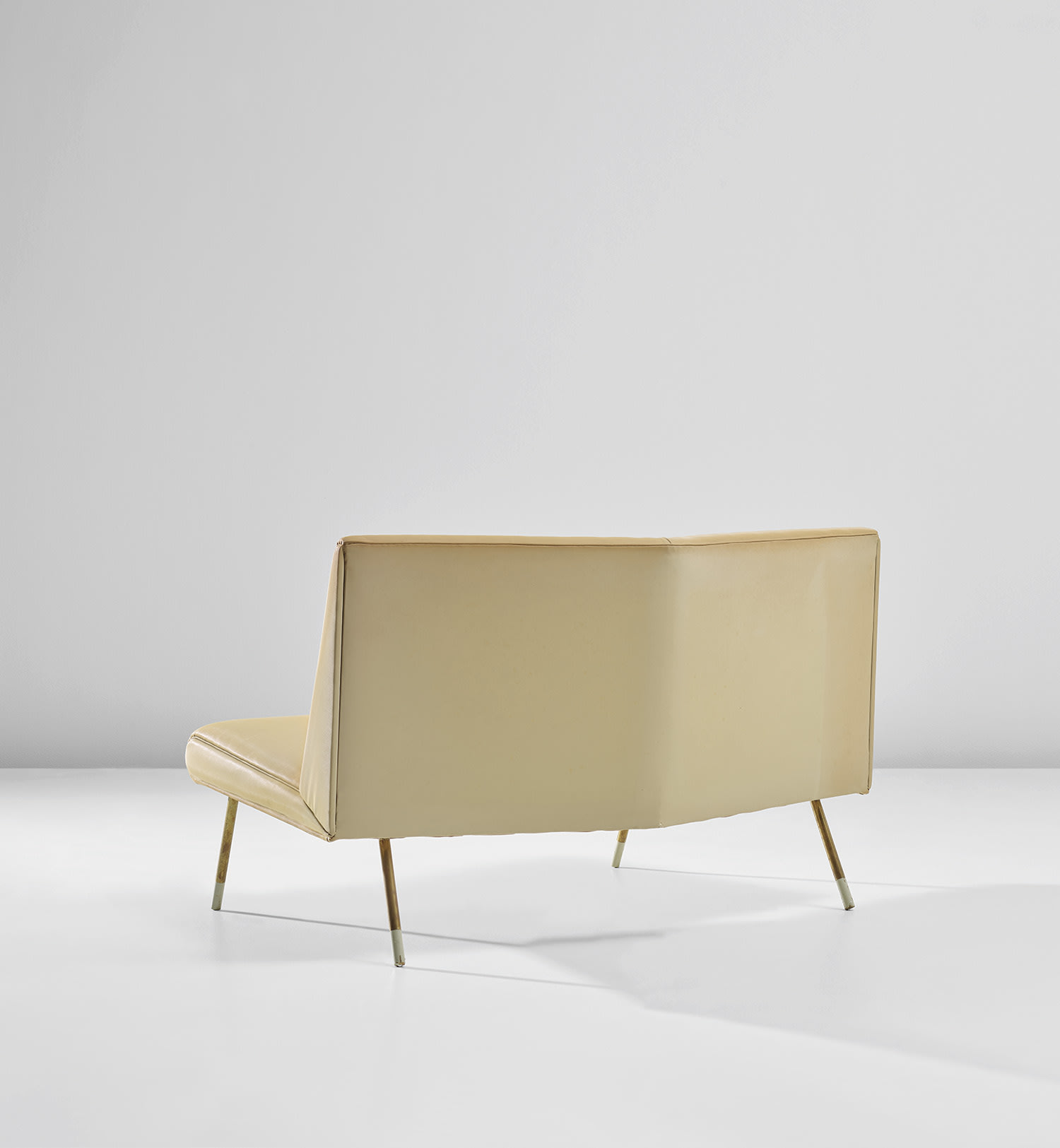





1
Gio Ponti
Rare two-seater sofa
Full-Cataloguing
By Brian Kish
The present austere two-seater sofa turns out to be perhaps the most reductive, but also the most complete embodiment of Gio Ponti’s obsession with the diamond form, whose complex geometries served as a matrix for many outstanding designs in his long career. Starting with the 1953 Distex armchair and soon followed by the Mariposa, a seat concept that first appeared at the Villa Planchart in Caracas and then reemerged in the Mariposa sofa for the 1957 Milan Triennale, Ponti multiplied the diamond form ad infinitum in his most productive decade. A close relative of the Mariposa, however, this time without sides or profiled arms, the present work still retains the essence of the diamond form as a distant memory. In Ponti’s own words the diamond or crystal is a metaphor, ‘used to pursue an image of purity, order, impulse...of eternity, of silence and charm at the same time; an image of closed forms in which everything would be consummated in the rigour of volumes and of thought; and let me add an image of classicism’ (Gio Ponti, Amate l'architettura, Genoa, 1957, p. 29).
The manufacturer of this rare sofa was most likely Cassina, corresponding with all of Ponti's other experimental furniture designs in the 1950s. Of note is the original Vinyltex fabric with its inherent properties of stretchability, which gave the upholstered form sharp lines, enhanced durability, and easy maintenance appropriate for modern living while announcing a better future. Ponti was aware and remarked on how the first impression we have of a chair or sofa is often from behind or from profile before it reveals itself in its entirety in a frontal perspective. Here the compact proportions give us a chance of experiencing the gestalt of the work in an instant.
Ponti had a great understanding of Leon Battista Alberti’s 1485 treatise on architecture, the first printed book on architecture, in which he explains how the application of musical and mathematical principles can achieve absolute perfection of proportion in architecture design. However, Alberti does pause in the midst of these remarks to consider for a moment a bend in a medieval street in Florence, noting how pleasant it is for one’s eye to rest on that angle as it disrupts static harmony. In turn, we encounter Ponti here at play with a fragmentary diamond form, a two-seater sofa with a gentle angle that brings unexpected delight as we approach it.
Gio Ponti
Italian | B. 1891 D. 1979Among the most prolific talents to grace twentieth-century design, Gio Ponti defied categorization. Though trained as an architect, he made major contributions to the decorative arts, designing in such disparate materials as ceramics, glass, wood and metal. A gale force of interdisciplinary creativity, Ponti embraced new materials like plastic and aluminum but employed traditional materials such as marble and wood in original, unconventional ways.
In the industrial realm, he designed buildings, cars, machinery and appliances — notably, the La Cornuta espresso machine for La Pavoni — and founded the ADI (Industrial Designer Association). Among the most special works by Gio Ponti are those that he made in collaboration with master craftsmen such as the cabinetmaker Giordano Chiesa, the illustrator Piero Fornasetti and the enamellist Paolo de Poli.